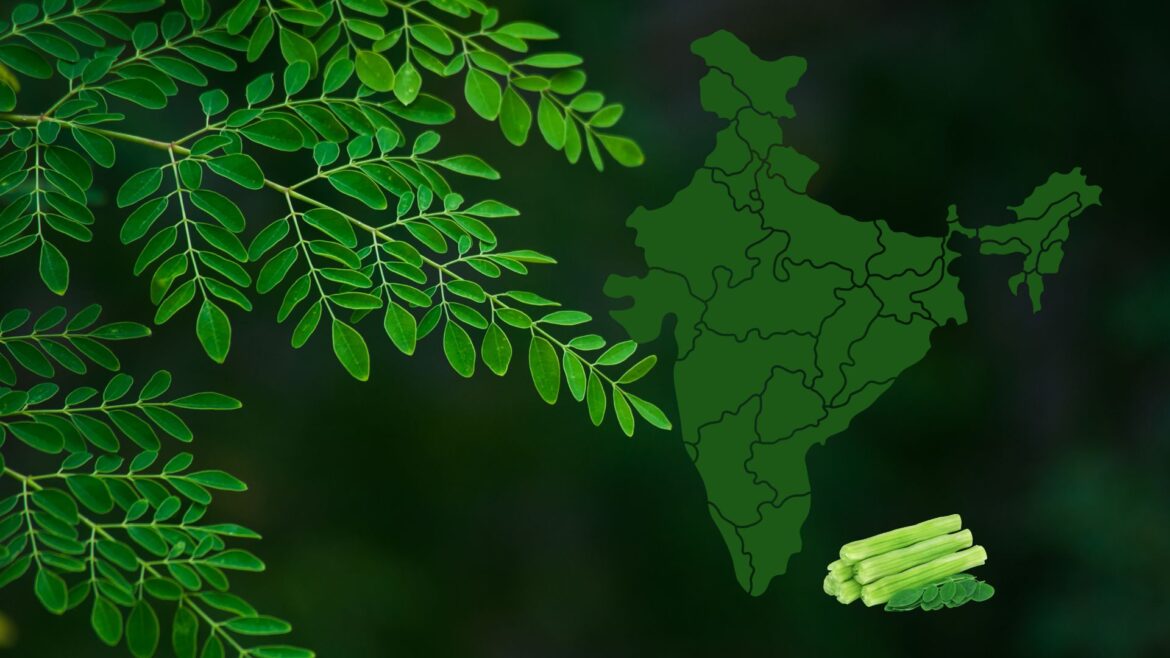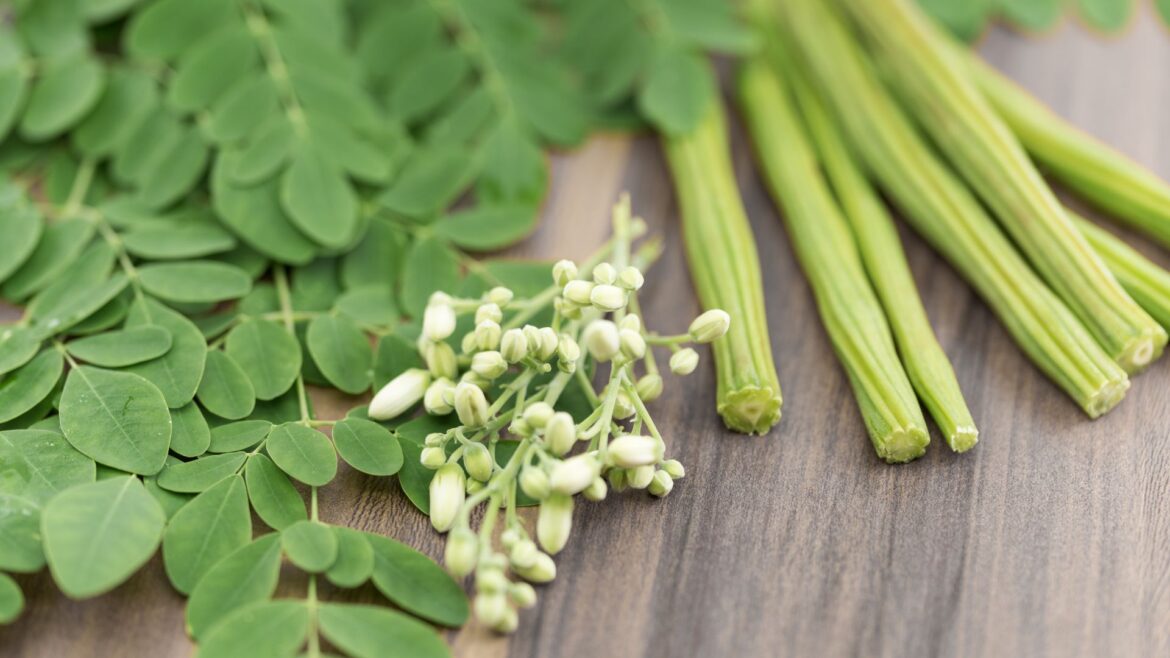Moringa Tree is Emerging as a Super Food in ‘Amrit Kaal’ for a ‘Viksit Bharat’
Moringa is also called the “Miracle Tree” or the “Tree of Life”. It is a native of the Indian Subcontinent and gaining popularity as a super food.

Moringa Cultivation in India: Key Indian States and Their Contribution
Moringa is cultivated across India for its nutritional and economic benefits. The world is warming up to the idea of the super food and we are seeing more and more products with Moringa as the core ingredient. India is a major producer and region wise there are pockets of cultivation concentration due to favourable climatic conditions and soil type. Moringa powder is now highly sought after for its varied uses and benefits.
Let’s look at the various states involved in the cultivation of Moringa, their characteristics and contributions –
The state accounts for 35-40% of India’s total Moringa production. It has warm climates and well drained soils which are ideal. Districts of Tiruppur, Theni, Dindigul, and Karur are major hubs for Moringa cultivation in Tamil Nadu. The state is popular for the “PKM-1” and “PKM-2” varieties, developed by the Tamil Nadu Agricultural University (TNAU). These varieties are high-yielding and have contributed to the state’s dominance in moringa production.
Also Read: Moringa Tree is Emerging as a Super Food in ‘Amrit Kaal’ for a ‘Viksit Bharat’
The Rayalaseema region, particularly the districts of Anantapur, Chittoor, and Kurnool, is prominent in Moringa cultivation. The semi-arid climate and suitable soil conditions support the crop’s growth.
Andhra Pradesh focuses on both domestic consumption and export, with a growing interest in value-added products like Moringa leaf powder, seed oil, nutritional supplement tablets, anti-aging face cream etc.
The northern districts of the state, including Bellary, Raichur, and Koppal, are key areas for Moringa cultivation. The state’s diverse climate and soil types allow for successful moringa farming. The Karnataka state government has been promoting Moringa cultivation under various horticulture development programs, increasing its share in recent years.
The Vidarbha region, particularly the districts of Nagpur, Amravati, and Yavatmal, is a significant Moringa-growing area. The state’s warm climate and relatively lower rainfall are conducive to moringa cultivation. In Maharashtra, Moringa is primarily grown for both fresh consumption and processing into powder and oil.
The districts of Ganjam, Rayagada, and Koraput are key areas for Moringa cultivation. The state’s agro-climatic conditions support Moringa farming, particularly in tribal regions where it is a traditional crop. The state government has initiated programs to increase Moringa cultivation, focusing on improving livelihoods in rural and tribal areas.
The Saurashtra region, particularly in the districts of Junagadh, Bhavnagar, and Rajkot, is known for Moringa cultivation. The arid and semi-arid climate is suitable for the crop. Gujarat has seen increasing interest in exporting Moringa products, particularly Moringa seeds and powder.
In Rajasthan, Moringa is grown on a smaller scale, particularly in arid regions where its drought-resistant nature is advantageous. Similar to Andhra Pradesh, Telangana has favorable conditions for Moringa cultivation, contributing a modest share to the national production. In West Bengal, Moringa is cultivated mainly for local consumption, with a focus on fresh pods and leaves.
Southern India: The southern states of Tamil Nadu, Andhra Pradesh, and Karnataka dominate moringa cultivation, collectively contributing over 70% of the total production.
Western and Central India: Maharashtra and Gujarat are key contributors, especially in the western region, with an increasing focus on value-added products and exports.
Eastern India: Odisha and West Bengal have emerging Moringa cultivation, mainly catering to local markets and small-scale processing.
Moringa cultivation in India is concentrated primarily in the southern and western states, with Tamil Nadu leading the production. These states benefit from favorable climatic conditions, supportive soil types, and government initiatives promoting horticulture. As demand for Moringa products continues to grow both domestically and internationally, these states are likely to enhance their production capacities, contributing to India’s position as a leading global producer of Moringa.

Moringa is also called the “Miracle Tree” or the “Tree of Life”. It is a native of the Indian Subcontinent and gaining popularity as a super food.

In this season of 2025, mango prices in Karnataka have witnessed an alarming decline. The Totapuri variety of mango has been the most notable for the price decline. This has raised an alarm and both the Central and Karnataka Government are taking necessary actions.

मखाना, जिसे फॉक्स नट के नाम से भी जाना जाता है, इस बात का एक उत्कृष्ट उदाहरण है कि किस प्रकार एक स्वदेशी भारतीय कृषि उत्पाद को स्वास्थ्यवर्धक सुपरफूड के रूप में सफलतापूर्वक प्रस्तुत किया जा सकता है तथा वैश्विक उपभोक्ताओं की आवश्यकताओं को पूरा करने के लिए विपणन किया जा सकता है।

Makhana, also know as Fox Nut is a stellar example of how an Indigenous Indian agricultural produce can be successfully positioned as a health superfood and marketed to cater the global consumers.

